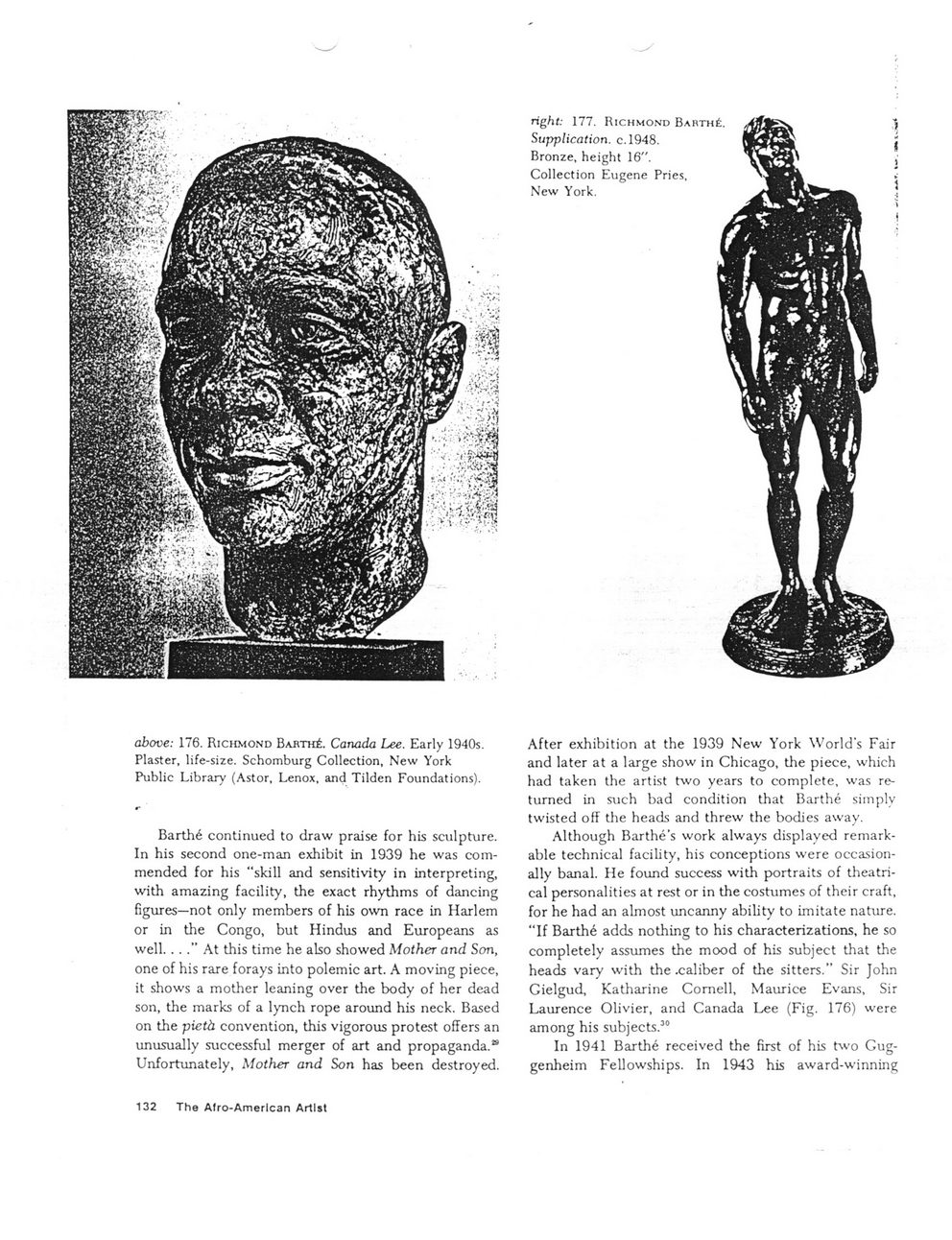This text was obtained via automated optical character recognition.
It has not been edited and may therefore contain several errors.
above: 176. Richmond Bajvth?. Canada Lee. Early 1940s. Plaster, life-size. Schomburg Collection, New York Public Library (Astor, Lenox, and Tilden Foundations). Barth6 continued to draw praise for his sculpture. In his second one-man exhibit in 1939 he was commended for his ?skill and sensitivity in interpreting, with amazing facility, the exact rhythms of dancing figures?not only members of his own race in Harlem or in the Congo, but Hindus and Europeans as well. . . .? At this time he also showed Mother and Son, one of his rare forays into polemic art. A moving piece, it shows a mother leaning over the body of her dead son, the marks of a lynch rope around his neck. Based on the pietli convention, this vigorous protest offers an unusually successful merger of art and propaganda.29 Unfortunately, Mother and Son has been destroyed. After exhibition at the 1939 New York World's Fair and later at a large show in Chicago, the piece, which had taken the artist two years to complete, was returned in such bad condition that Barthe simply twisted off the heads and threw the bodies away. Although Barthe?s work always displayed remarkable technical facility, his conceptions were occasionally banal. He found success with portraits of theatrical personalities at rest or in the costumes of their craft, for he had an almost uncanny ability to imitate nature. ?If Barthe adds nothing to his characterizations, he so completely assumes the mood of his subject that the heads vary with the .caliber of the sitters.? Sir John Gielgud, Katharine Cornell, Maurice Evans, Sir Laurence Olivier, and Canada Lee (Fig. 176) were among his subjects.30 In 1941 Barthe received the first of his two Guggenheim Fellowships. In 1943 his award-winning 132 The Alro-Amerlcan Artist

Barthe, Richmond The-First-Black-Masters-of-Modernism-pg.132